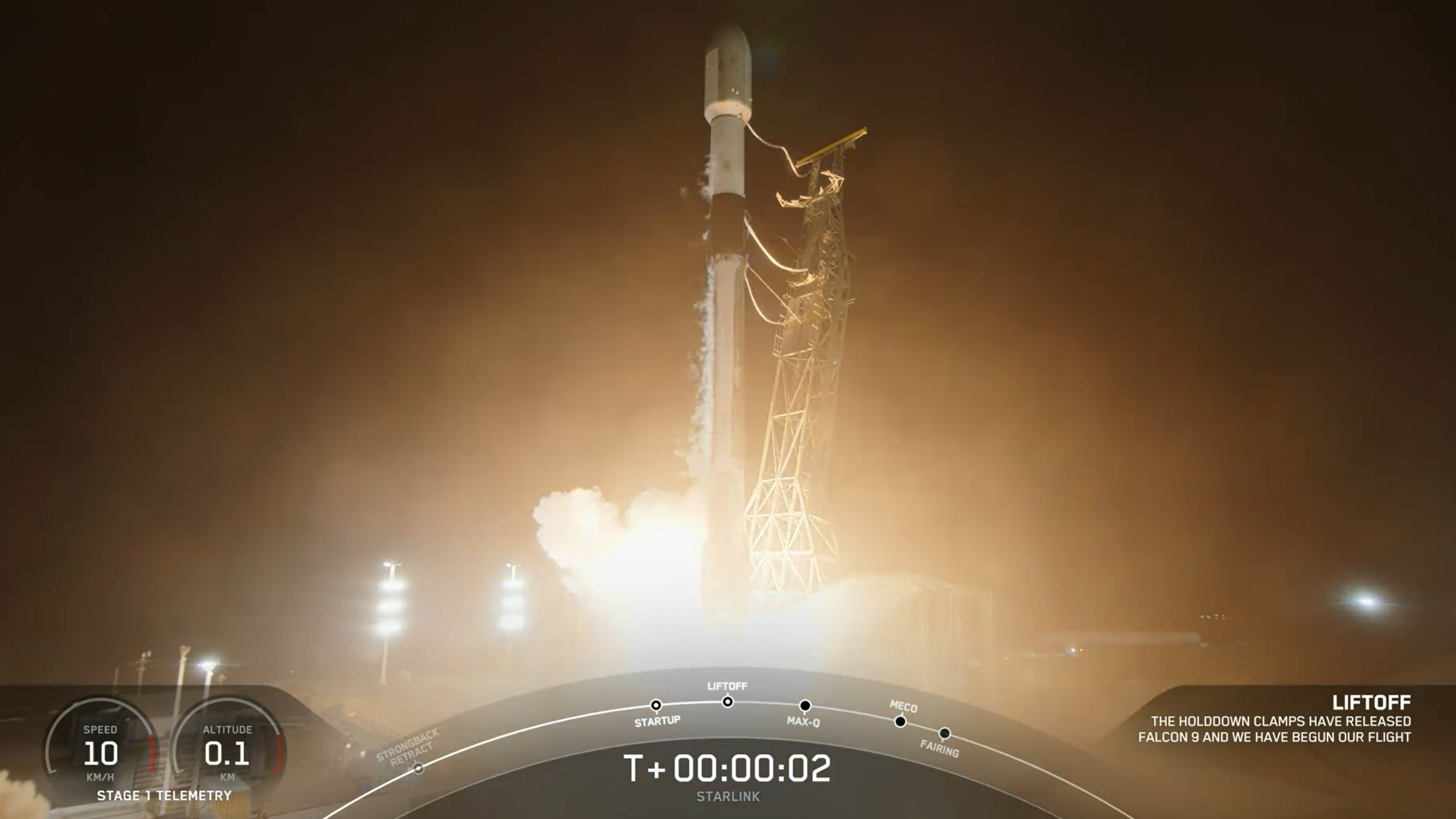SpaceX launched another batch of its Starlink internet satellites from California early on Wednesday (Oct. 30).
A Falcon 9 rocket carrying 20 Starlink spacecraft, including 13 with direct-to-cell (DTC) capability, lifted off from Vandenberg Space Force Base at 8:07 a.m. ET (1307 GMT; 5:07 a.m. local California time).
SpaceX streamed the launch via X, formerly Twitter.

The Falcon 9's first stage came to Earth about eight minutes after liftoff, touching down on the drone ship "Of Course I Still Love You," which was stationed in the Pacific Ocean.
It was the 14th launch and landing for this particular booster and its 11th Starlink mission overall, according to a SpaceX mission description.
The Falcon 9's upper stage hauled the Starlink satellites to low Earth orbit (LEO), where they were expected to be deployed about an hour after liftoff.
Related: Starlink satellite train: How to see and track it in the night sky
Get the Space.com Newsletter
Breaking space news, the latest updates on rocket launches, skywatching events and more!
SpaceX has already launched more than 100 Falcon 9 missions in 2024, about two-thirds of them devoted to building out the Starlink megaconstellation.
The company currently operates more than 6,400 Starlink spacecraft in LEO, according to astrophysicist and satellite tracker Jonathan McDowell. About 250 of them are DTC satellites.
Editor's note: This post was updated on Oct. 29 to reflect the most current launch window provided by SpaceX, and updated again on Oct. 30 after the launch.
Join our Space Forums to keep talking space on the latest missions, night sky and more! And if you have a news tip, correction or comment, let us know at: community@space.com.

Michael Wall is a Senior Space Writer with Space.com and joined the team in 2010. He primarily covers exoplanets, spaceflight and military space, but has been known to dabble in the space art beat. His book about the search for alien life, "Out There," was published on Nov. 13, 2018. Before becoming a science writer, Michael worked as a herpetologist and wildlife biologist. He has a Ph.D. in evolutionary biology from the University of Sydney, Australia, a bachelor's degree from the University of Arizona, and a graduate certificate in science writing from the University of California, Santa Cruz. To find out what his latest project is, you can follow Michael on Twitter.









